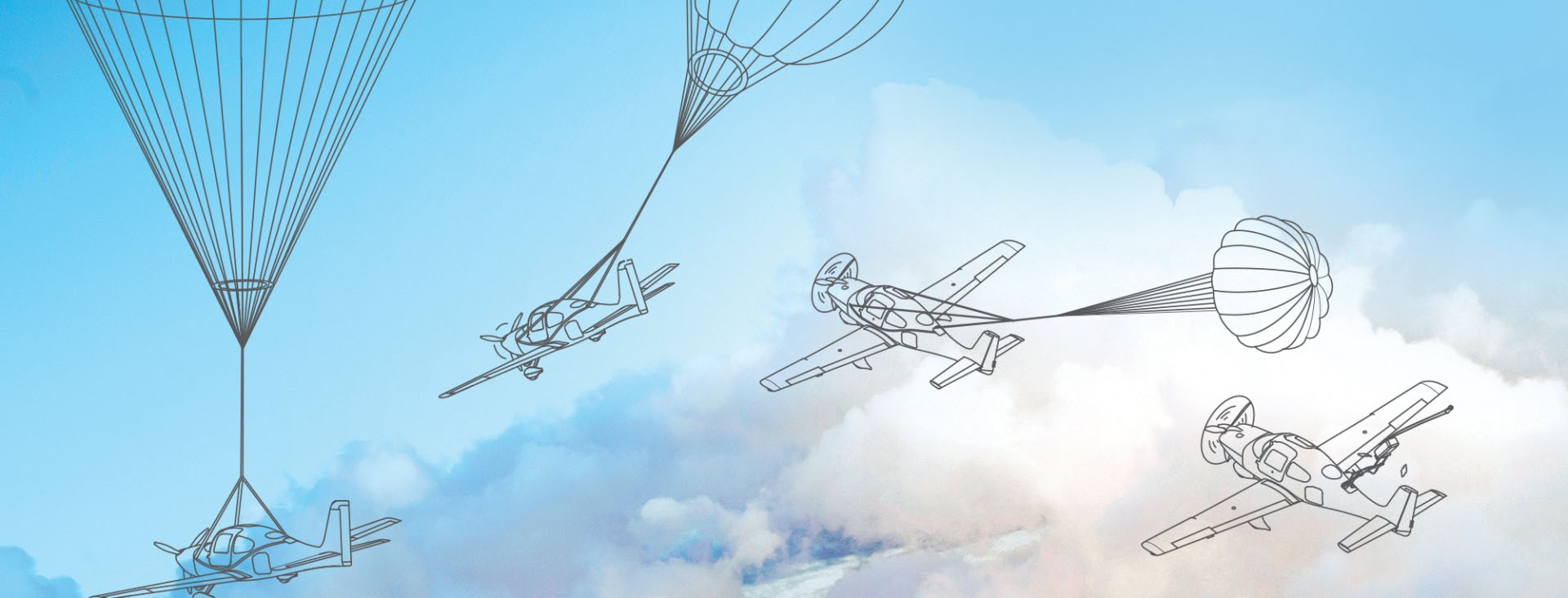Airframe Parachute
CAPS® – For Safer Skies
(Source: cirrusaircraft.com)
The original inspiration for the whole-airplane parachute on the Cirrus airplane was a mid-air collision that could have led to tragedy. But instead, it led to the creation of the Cirrus Airframe Parachute System® – the most significant safety innovation in over a half-century of general aviation. From the start of our company, each and every day, the profound passion for everyone at Cirrus is to create safer airplanes, safer pilots and safer skies. Not just for Cirrus pilots, but all pilots. Flying safely will always be our most fundamental mission.
The parachute system is designed to protect occupants in the event of an emergency by lowering the aircraft to the ground after deployment. CAPS revolutionised general aviation safety by providing an additional measure of safety to occupants, similar in theory to the role of seatbelts in automobiles. No other certified general aviation aircraft manufacturer in the world provides this safety feature as standard equipment.
In the event of an in-flight emergency, pulling the red CAPS handle on the ceiling inside the cockpit deploys a solid-fuel rocket out a hatch that covers the concealed compartment where the parachute is stored. As the rocket carries the parachute rearward from the back of the airplane, the embedded CAPS airplane harness straps release from the fuselage. Within seconds, the 65′ diameter canopy will unfurl, controlling the aircraft rate of descent. The final landing is absorbed by the specialized landing gear, a roll cage and Cirrus Energy Absorbing Technology (CEAT™) seats.


